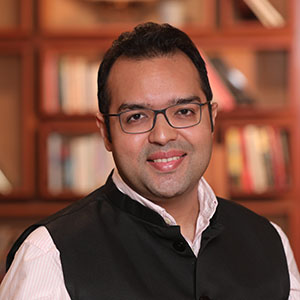At the heart of every effective nonprofit in India is a simple but profound truth: people are the programme. This is especially true in rural India, where organisations face intense geographic, infrastructure, and financial constraints.
Attracting and retaining talent in these settings is both a challenge and a critical lever for impact. Local communities often lack access to formal education or exposure to leadership pathways, which limits the pipeline for managerial or strategic roles. On the other hand, qualified professionals from cities may be reluctant to relocate.
This creates a familiar paradox. Those most committed to the community may not meet conventional definitions of “qualified” for certain roles. Meanwhile, those with conventional credentials may not be present or willing to lead from the ground.
Yet, in these constraints lies a powerful opportunity. When grassroots nonprofits invest in people, especially people who are rooted in the communities they serve, they can create something extraordinary. In places where systems are fragile or almost entirely absent, it’s people who bring resilience, contextual intelligence, and continuity.
Through the Bridgespan Nonprofit Development Programme (BNDP), we’ve had the privilege to work with organisations that prove this daily. Organisations such as Sanatan Unnayan Sangstha (SUS), an NGO that has worked to uplift marginalised people in tea gardens and rural areas since 2006, and CARM-DAKSH, which focuses its work to increase well-being in the tribal communities of North Chattisgarh, are meeting the talent challenge with creativity and care, building leadership from within rather than bringing people in from outside their organisations. Their experiences show that developing people isn’t just essential to sustaining impact. It’s the pathway to it.
The Context of Grassroots Nonprofits in India
To understand the talent challenge, we must consider context. Grassroots organisations, which tend to be small and community-rooted, work on complex issues in some of India’s most underserved geographies. Their deep local presence sets them apart from larger urban or national NGOs, which typically operate through centralised, hierarchical models. The grassroots nonprofits we’ve come across tend to have flatter structures and community-anchored leadership. Team members also often take on multiple roles, from implementation to administration.
But being a grassroots, rural organisation also brings its own unique challenges. Hiring locally requires sustained capacity-building, while professionals hired from outside the grassroots organisations communities struggle to stay due to standards of living or lack of support systems. As Ashok Kumar Nath, founder and advisor of SUS, puts it, “You don’t find talent here—you build it.”
Nath’s words highlight a deeper shift in how we think about leadership in the social sector. Grassroots organisations aren’t just delivering programmes; they’re shaping and growing local leaders, not only to lead local teams but eventually the organisations themselves. Yet, this work often goes unseen and is rarely given the recognition or support it deserves.
Common Challenges in Rural Talent Development
For grassroots nonprofits, the journey of developing and retaining talent is shaped by a mix of systemic and lived challenges. Recruitment barriers include limited awareness of the development sector and stigma around nonprofit work. “Many times, people don’t even know what NGOs are and what they do. The ones who know think of it as a social service. Most parents and community members ask the youth, ‘Will you even get money if you work at an NGO?,’” says Nath.
Assessing leadership potential without conventional credentials adds another layer of difficulty. As Ranu Bhogal, executive director of CARM-DAKSH, shares, “We look for initiative, ownership, and concern for the people we work with. Not credentials.” Retention is also difficult, especially for community-based staff – often women – who face modest salaries, family pressure, or social scrutiny.
Leadership pipeline gaps are significant. Many promising individuals lack mentors or pathways to grow within the organisation. Without visible role models from similar backgrounds, it’s hard to envision their potential trajectory. At the same time, those with formal training may leave without staying long enough to contribute to leadership transitions.
Another pressing tension is the issue of talent poaching. “We spend three to four years nurturing someone and then a better-resourced NGO offers them a job,” Bhogal shares. This reveals a contradiction in the sector: while collaboration is key, competition for limited human resources can undermine it.
Cultural mismatches can also emerge as organisations grow. Nath notes, “People in the field think that the headquarter-level teams sit more in front of their screens than have an understanding of what is happening in the field with the community.” This shows how field teams can feel disconnected from the head office—especially when funder demands introduce rules and hierarchy that weaken the inclusive approaches many grassroots organisations were built on.
These challenges are real, and there are no quick fixes. But the challenges aren’t insurmountable. Both SUS and CARM-DAKSH have navigated these obstacles by rethinking what talent development means in grassroots settings. Rather than seeing constraints as limitations, they have turned them into advantages. Rather than competing for scarce external talent, they’ve chosen to grow their own.
Their approaches rest on a simple premise: the best leaders for community-rooted work often emerge from the communities themselves. But realising this potential requires investment, cultivation, and a willingness to redefine what leadership looks like.
Rethinking Strategy: Cultivating Talent, Not Just Consuming It
So, what does this look like in practice? SUS and CARM-DAKSH point to four shifts that can transform how grassroots organisations approach talent development.
1. Shift from Hiring for Roles to Growing People
Across the sector, grassroots organisations are often seen as teams that carry out programmes, not as places where leaders are developed. This thinking creates a gap where important decisions and leadership tend to sit in cities, while local teams are simply expected to deliver.
But SUS and CARM-DAKSH, which are rooted in the communities they serve, show that there is another way. Being based in the community allows them to build leaders from within. It starts with the hiring process. “Interviews can only take you so far,” says Bhogal. “We see how people behave – do they take ownership, go beyond tasks, and show concern for the community? That’s our real filter.”
At SUS, team members with limited formal education are nurtured over time, often beginning as volunteers or field staff and growing into leadership roles through observation, mentoring, and support. Nath’s own journey from field mobiliser to senior leader reflects the organisation’s belief in long-term investment.
This approach means treating every team member not just as a function-filler, but as someone who can grow with the organisation. As Nath put it, “If someone has a good learning attitude and respects others, whether senior or junior, we know we can grow them. Skills can be taught, attitude can’t.”
2. Recognise Local Leadership as Central to Sustainability
Local leaders bring more than proximity. They bring contextual intelligence, trust, legitimacy, and networks. Instead of relying on external expertise, grassroots nonprofits can develop talent that already understands the terrain, culture, and the community’s pace of change.
This is a strategic choice. Sustainability without local leadership is impossible. SUS’s Priti Chakraborty, women educator and leader of the women empowerment programme, has been with the organisation for over 13 years and puts it simply: “I’ve stayed because I want my village to develop and feel this organisation is working in that direction.”
3. Invest in People to Strengthen Organisations
Too often, staff development is seen as a luxury – something to do when time and budget allow. But for grassroots nonprofits, helping people grow is not an add-on. It’s central to strengthening teams, improving programmes, and building leadership for the long term.
Of course, many NGO leaders point out that growing talent takes time, planning, and resources they may not always have. It can feel like a slow path when programme demands are urgent. But there are no shortcuts because a programme is only as strong as the people behind it. Investing in internal talent isn’t a side project. It is the work.
SUS and CARM-DAKSH demonstrate that with the right support, local staff can become strong leaders, regardless of their formal qualifications. “We ask staff who’ve spent two years with us if they’d like to become senior leaders,” says Nath. “If they’re interested, the governing body interviews them and supports their growth.”
This type of staff development doesn’t happen by chance. It takes time, planning, and resources. That’s why funder support matters so deeply. Many grassroots organisations simply don’t have the resources to invest in staff development, so there is an increasing need for funders to explicitly support those investments. When they do, they enable organisations to build strong leadership, strengthen teams, grow in a sustainable way – and strengthen the whole sector. "Talent developed here becomes a resource for the whole sector,” Bhogal shares. At CARM-DAKSH, flexible funding and trust-based relationships have enabled the organisation to invest in its team through mentoring, training, and leadership development programmes. “The returns on these investments may not be realised within short project cycles,” Bhogal reflects, “but they contribute significantly to strengthening the organisation.”
4. Focus on Building Organisational Culture
Culture often develops by default. But the most successful grassroots organisations build it by design. They cultivate cultures of trust, feedback, flexibility, and dignity; qualities that keep people anchored even when the work is hard.
At both SUS and CARM-DAKSH, building culture shows up in small but meaningful actions, from short leave for family needs to casual group discussions that allow staff to reflect on their actions and feelings to meals eaten together as a team. “Sometimes what helps most is simply being heard, then offering what support we can – whether it’s a short break or just some joyful gupshup [chit chat],” says Bhogal.
“Transformation starts with the individual, then the organisation, and then the community,” Bhogal adds, emphasising the layered impact of culture on leadership and mission. Retention, particularly in rural areas, is deeply tied to whether people feel respected, supported, and emotionally safe.
From Constraint to Opportunity
Grassroots nonprofits operate in some of the most demanding conditions imaginable, but they are also centres of innovation, resilience, and potential. In the absence of ready-made talent, they have learned how to grow their own talent by investing in people with potential, nurturing leadership from within, and building inclusive cultures. They have shown that constraints don’t have to limit innovation. Rather, they can drive it.
At SUS, this commitment is visible in how they groom leaders from the Barak Valley, support staff, and welcome back those who have left. “People come back,” shares Nath. “That shows something is working in our culture.” At CARM- DAKSH, the same philosophy is evident in its embedded mentorship, flexible structures, and values-driven leadership pipeline. Either way, the message is clear: when people are seen, trusted, and supported, they rise.
But this work can’t remain isolated. For the sector to evolve, it must build ecosystems in which talent is cultivated, not just consumed. That means seeing staff as the true creators of social impact and resourcing their growth with the same seriousness put into programme delivery. In the end, it’s not just programmes that drive change. It’s people.





